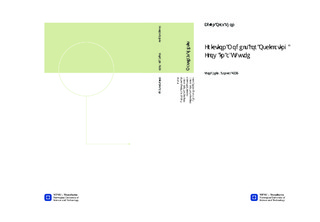| dc.contributor.advisor | Støvneng, Jon Andreas | nb_NO |
| dc.contributor.advisor | Nydal, Ole Jørgen | nb_NO |
| dc.contributor.author | Thon, Bjørn Olav | nb_NO |
| dc.date.accessioned | 2014-12-19T13:19:23Z | |
| dc.date.available | 2014-12-19T13:19:23Z | |
| dc.date.created | 2014-05-08 | nb_NO |
| dc.date.issued | 2014 | nb_NO |
| dc.identifier | 716285 | nb_NO |
| dc.identifier | ntnudaim:10286 | nb_NO |
| dc.identifier.uri | http://hdl.handle.net/11250/247213 | |
| dc.description.abstract | The basic theory of friction in pipe flow was reviewed in the first part of this thesis. Using the results from this review, steady state friction relations were derived for laminar and turbulent pipe flow.Steady state turbulent friction relations were tested in 1D simulations of oscillating flow in a U-tube with a constant inner diameter. The results show that steady friction relations do not provide sufficient damping compared to experimental data. In order to improve the simulation results, systematic tests of some common dynamic friction relations were conducted. The concluding solution to the friction issue is a combination of laminar and turbulent friction relations, with a dynamic correction. The new friction relation was tested in 1D simulations of oscillating flow in a U-tube with a constant inner diameter. Results show that there is very good accordance between simulations and experimental data. The computational results were validated by experimental data from flow cases of varying Reynolds numbers and three different liquids.In the second part of this thesis, experimental work was conducted on a U-tube with an inner diameter change at the bottom of the bend. The damping of the oscillations was observed to be much greater than in the U-tube with a constant inner diameter. A computer program for image analysis was developed to allow for continuous measurements of the liquid interface level in the U-tube experiments. The program returned satisfying results, both with respect to accuracy and reliability. However, it was concluded that the results from the program could have been better if the U-tube had been made from another material.Simulations of oscillating flow in the U-tube with an inner diameter change were done in order to further investigate the new dynamic friction relation. Comparisons of simulated and experimental results indicated that the friction loss in the diameter change coupling caused inaccuracies in the simulations. | nb_NO |
| dc.language | eng | nb_NO |
| dc.publisher | Institutt for fysikk | nb_NO |
| dc.title | Friction Models for Oscillating Flow in a U-tube | nb_NO |
| dc.type | Master thesis | nb_NO |
| dc.source.pagenumber | 165 | nb_NO |
| dc.contributor.department | Norges teknisk-naturvitenskapelige universitet, Fakultet for naturvitenskap og teknologi, Institutt for fysikk | nb_NO |

